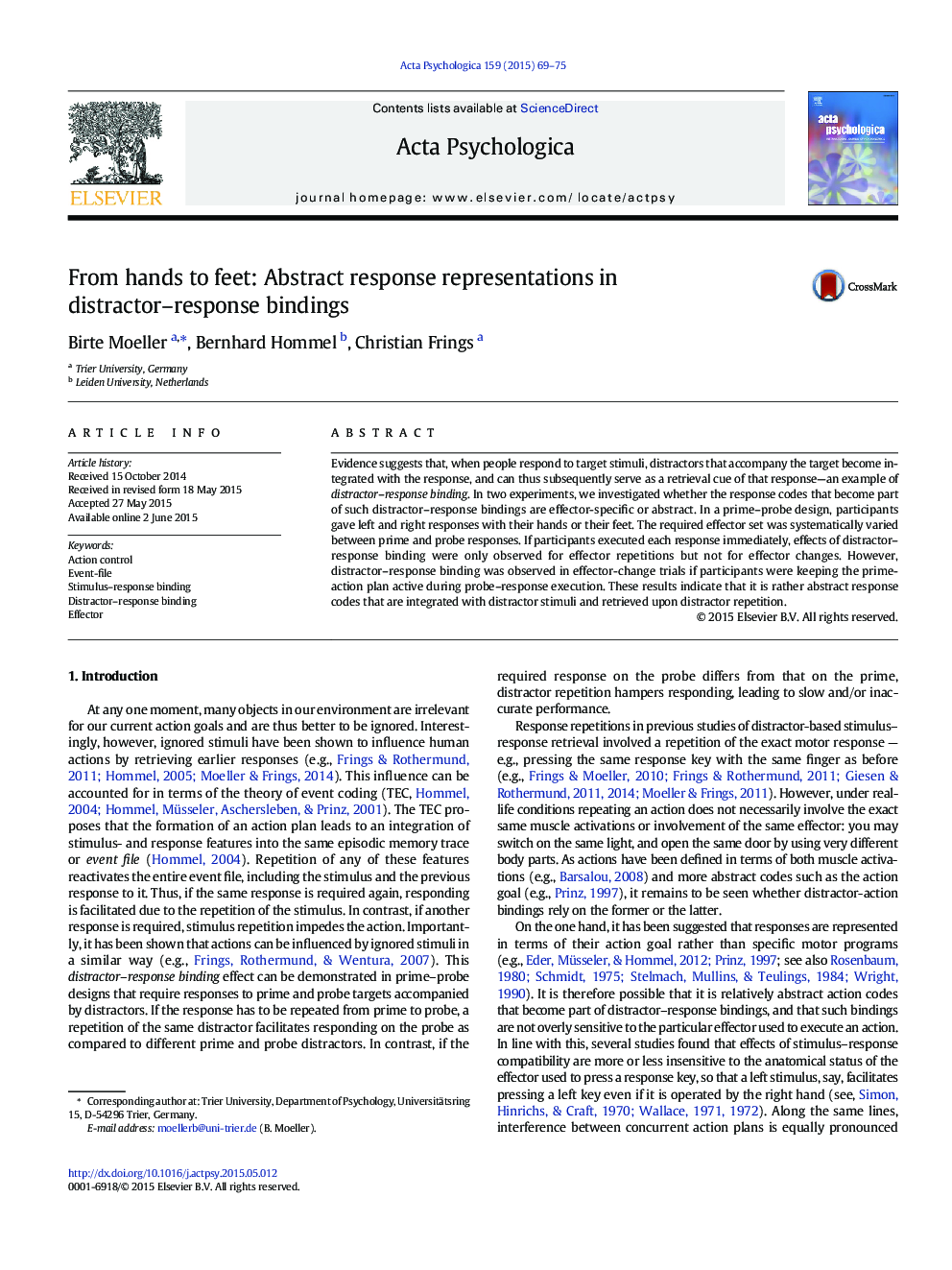| Article ID | Journal | Published Year | Pages | File Type |
|---|---|---|---|---|
| 919716 | Acta Psychologica | 2015 | 7 Pages |
•Two experiments varied effector relation (repetition/change) from response n-1 to n.•Immediate response execution was compared with delayed first response.•Effector change: distractor–response binding effect only for delayed first response•Abstract response codes in distractor–response bindings in active action plans
Evidence suggests that, when people respond to target stimuli, distractors that accompany the target become integrated with the response, and can thus subsequently serve as a retrieval cue of that response—an example of distractor–response binding. In two experiments, we investigated whether the response codes that become part of such distractor–response bindings are effector-specific or abstract. In a prime–probe design, participants gave left and right responses with their hands or their feet. The required effector set was systematically varied between prime and probe responses. If participants executed each response immediately, effects of distractor–response binding were only observed for effector repetitions but not for effector changes. However, distractor–response binding was observed in effector-change trials if participants were keeping the prime-action plan active during probe–response execution. These results indicate that it is rather abstract response codes that are integrated with distractor stimuli and retrieved upon distractor repetition.
